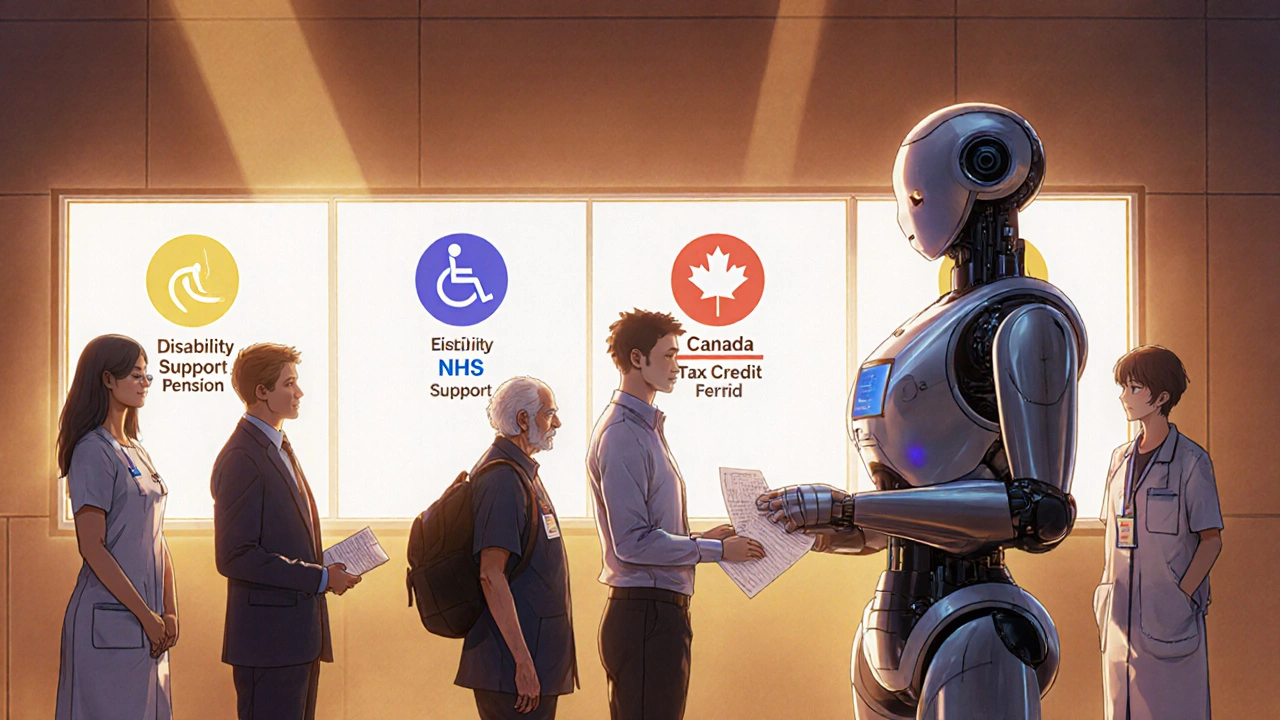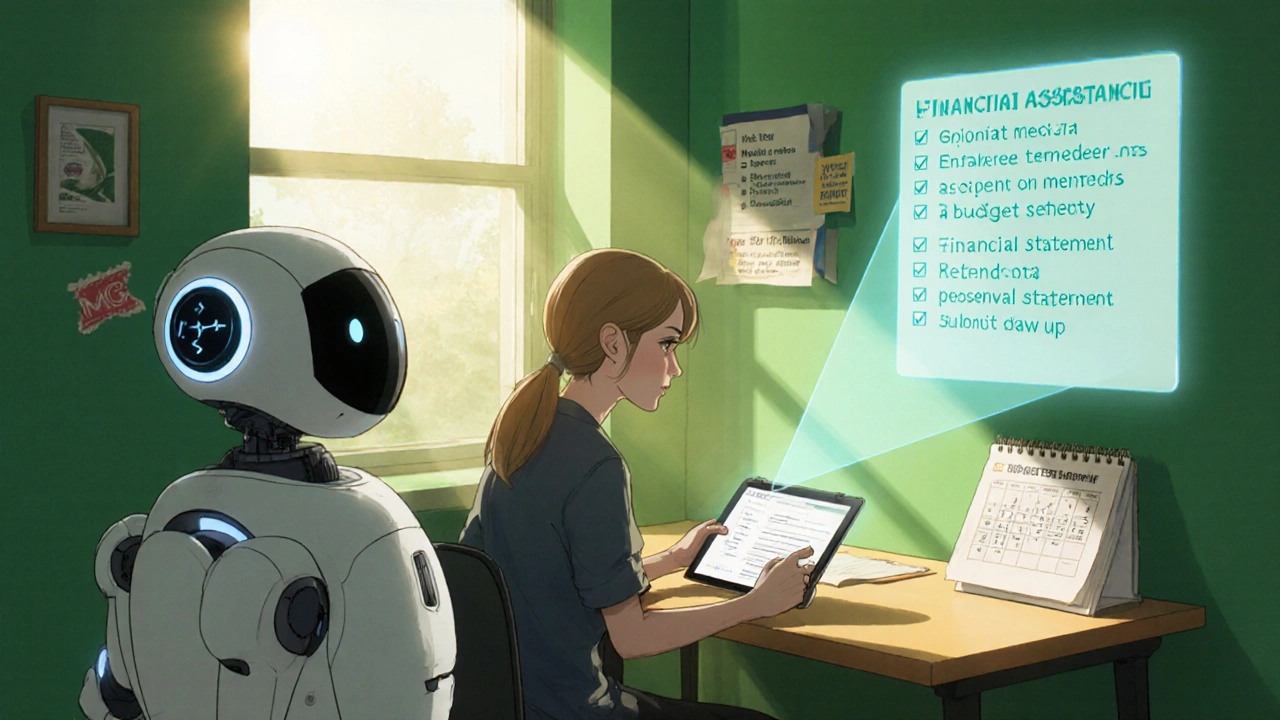MG Financial Assistance Estimator
Calculate Your Potential Financial Help
Estimate how much financial assistance you could receive based on your location, medications, and income level.
Myasthenia Gravis is a chronic autoimmune disorder that weakens the muscles controlling eye movement, breathing, and facial expression. Managing MG often means lifelong medication, frequent specialist visits, and sometimes expensive procedures such as plasma exchange or thymectomy. The cost stack can feel overwhelming, especially when you’re already coping with fatigue and unpredictable symptoms.
That’s why knowing where to look for Myasthenia Gravis financial assistance can make the difference between stress and stability. Below you’ll find a roadmap of government programs, disease‑specific nonprofits, insurance hacks, and everyday tips that help patients stretch every dollar.
Why the financial side matters for MG patients
Medication alone can run $2,000 to $4,000 a month in the United States, and even higher for newer biologics. In Australia, the Pharmaceutical Benefits Scheme (PBS) subsidises many drugs, but out‑of‑pocket costs still add up when you factor in specialist consultations, travel to tertiary hospitals, and potential home‑care aides.
Beyond prescriptions, many patients need assistive devices-wheelchairs, mobility scooters, or custom orthotics. These items often sit outside standard health insurance coverage, leaving a gap that charities and government safety nets are designed to fill.
Government programs you may qualify for
Different countries have distinct safety‑net programs. Below are the most common sources of aid for MG patients in Australia, the United States, the United Kingdom, and Canada.
- Disability Support Pension (DSP) - Australian Government payment for people whose medical condition prevents sustained work. Eligibility hinges on a medical assessment confirming that MG limits your ability to earn a living.
- Medicare - In Australia, Medicare covers most specialist visits and hospital stays. Some allied‑health services (e.g., physiotherapy) are partially reimbursed under the Chronic Disease Management Plan.
- Pharmaceutical Benefits Scheme (PBS) - Provides heavy subsidies for listed MG medications such as pyridostigmine, mycophenolate, and eculizumab. If a drug isn’t listed, you can apply for a patientaccess scheme.
- Social Security Disability Insurance (SSDI) - U.S. program that offers monthly cash benefits to citizens who have worked and paid Social Security taxes, but can no longer work due to a disabling condition.
- Medicaid - State‑run health coverage in the U.S. for low‑income individuals. Many states cover MG‑related prescription costs and home health services.
- National Health Service (NHS) Support - In the U.K., the NHS provides free specialist care and prescription drugs at a nominal charge (often waived for patients on low income).
- Canada’s Disability Tax Credit (DTC) - Provides tax relief and can unlock provincial drug plans that cover high‑cost MG meds.
When you apply, keep a copy of your latest neurologist’s report, medication list, and any functional‑capacity assessments. Those documents are the backbone of most applications.
Disease‑specific nonprofits and grant programs
Nonprofits fill the gaps that government programs miss. They often offer one‑off grants, equipment vouchers, or travel subsidies.
- National Myasthenia Gravis Foundation (NMGF) - U.S.-based charity that runs the Myasthenia Gravis Foundation’s Patient Assistance Program. Grants range from $500 to $2,000 for medication co‑pays and travel to specialist centers.
- Myasthenia Gravis Association of America (MGAA) - Offers a “Therapy Access Fund” that reimburses patients for off‑label drug use when insurance denies coverage.
- Myasthenia Gravis Foundation Australia (MGFA) - Provides a “Travel Assistance Grant” for patients who need to travel to tertiary hospitals in Sydney or Melbourne. You can also apply for equipment vouchers.
- Muscle‑Weakness Charities Network - A coalition of rare‑disease charities that periodically opens a pooled fund for assistive‑device purchases.
- Veterans Affairs (VA) Health Care - In the U.S., eligible veterans with MG receive free medication, hospital care, and sometimes a service‑connected disability rating that adds extra compensation.
Application cycles differ. Some charities accept rolling applications, while others have a once‑per‑year deadline. Register on their websites, sign up for newsletters, and set calendar reminders.

Insurance tricks and pharmacy‑saving programs
Even with insurance, patients often pay high co‑pays. Here are proven tactics to shave those dollars off.
- Check the PBS/Pharmacy Benefit Formulary first. If your medication is listed, your out‑of‑pocket cost is capped.
- Ask your neurologist to write a “Therapeutic Goodwill” prescription. Some pharma reps grant temporary free‑samples while insurance approval is pending.
- Use patient‑access programs. Companies like Alexion (eculizumab) and Roche (rituximab) run official assistance programs that cover part of the drug cost for qualifying patients.
- Shop around for the lowest price. In the U.S., price‑comparison tools such as GoodRx can reveal discounts up to 80%.
- Consider a 340B pharmacy. Hospitals that qualify for the 340B drug pricing program can pass on deep discounts to eligible patients.
- Utilise bulk‑purchase or group‑insurance plans. Some patient advocacy groups negotiate collective buying power for expensive biologics.
Practical tips for successful applications
Getting aid is often a paperwork marathon. Follow these steps to avoid common pitfalls.
- Gather all medical documentation. Include recent neurologist notes, diagnostic test results (e.g., EMG, antibody panel), and a current medication list.
- Create a simple budget sheet. List monthly expenses-medication, travel, home‑care, utilities-and highlight the gaps you need to fill.
- Write a short personal statement. Explain how MG impacts your daily life, your employment status, and why you need financial support.
- Tailor each application. Use the exact language the funder requests; copy‑pasting generic letters often leads to rejection.
- Keep a master folder (digital or physical). Store copies of every form, receipt, and email confirmation.
- Follow up politely. After submitting, call the organization within two weeks to confirm receipt and ask about the decision timeline.
- Plan for the long term. Most grants cover 6‑12months; set a reminder to re‑apply before the funds run out.

Quick reference: Comparison of major assistance options
| Source | Eligibility | Typical Benefit | Application Frequency | Key Caveat |
|---|---|---|---|---|
| Disability Support Pension (Australia) | Medical proof of work‑limiting MG + income test | Up to AU$1,100 per fortnight | Every 6months (review) | Long processing time (12‑16weeks) |
| Social Security Disability Insurance (US) | Work history + severe MG diagnosis | Average US$1,300 monthly | Initial decision 3‑5months; renewals yearly | Strict definition of “unable to work” |
| National Myasthenia Gravis Foundation (US) | Proof of MG, need for medication co‑pay assistance | $500‑$2,000 grant | Rolling | Limited fund size; competitive |
| Myasthenia Gravis Foundation Australia | Australian residency, travel for specialist care | Travel voucher up to AU$1,200 per year | Annual | Must provide travel receipts |
| PBS (Australia) | Prescription for listed MG drug | Up to 85% subsidy | Continuous | Only listed medicines covered |
| Patient‑Access Programs (pharma) | Diagnosis + insurance denial | Partial to full drug cost coverage | Case‑by‑case | Requires physician enrollment |
Next steps you can take today
1. Write down all current expenses and locate your latest neurologist report.
2. Visit the website of the Myasthenia Gravis Foundation Australia and download the Travel Assistance application.
3. Call the Australian Centrelink line to start a DSP enquiry (reference number 132658).
4. If you live in the U.S., create a GoodRx account and check the price of pyridostigmine in your zip code.
5. Join a local MG support group on Facebook - members often share fresh grant alerts.
Taking these small actions can turn a mountain of bills into a manageable list. Remember, you’re not alone; thousands of MG patients navigate the same paperwork every year, and most find at least one source of help.
Frequently Asked Questions
Can I receive both government benefits and nonprofit grants?
Yes. Most programs are not mutually exclusive. Government pensions cover living expenses, while charities usually fund medication co‑pays, travel, or equipment. Just be transparent in each application about the other sources you receive.
How long does it take to get approved for the Disability Support Pension?
Processing typically takes 12 to 16 weeks after you submit a complete claim. You can request an interim payment if you can prove urgent financial need.
What if my medication isn’t on the PBS list?
You can apply for a patient‑access scheme through the drug’s manufacturer. Your doctor will need to submit a special authority request, which the PBS reviews on a case‑by‑case basis.
Are there any tax deductions for MG‑related expenses?
In Australia, you may claim a portion of medical expenses as a tax offset if you itemise deductions. In the U.S., unreimbursed medical costs that exceed 7.5% of your adjusted gross income are deductible.
How can I find local support groups that share grant information?
Search Facebook for “Myasthenia Gravis Australia” or “MG Support Group (Your City)”. Many groups have pinned posts listing current grant deadlines and members who have successfully applied.

Rohit Sridhar
Reading through the list of assistance options feels like finding a lifeline in a sea of paperwork, and I truly believe that knowledge is the first step toward financial relief. First, make a master spreadsheet that tracks every recurring cost – from pyridostigmine refills to travel miles for specialist appointments. Next, flag which items are covered by government programs in your country and which fall into the nonprofit gap. Don’t forget to keep digital copies of neurologist reports; they are the key evidence for disability claims. When you apply for the Disability Support Pension in Australia, double‑check the income test thresholds and be ready for a 12‑week waiting period – a early interim payment request can ease the pressure. In the United States, SSDI is worth pursuing even if you’ve been out of the workforce for a while; many patients qualify after the fifth year of diagnosis. If you’re a veteran, the VA can cover most medication costs and even provide a service‑connected rating that adds extra compensation. For patients in the UK, the NHS prescription pre‑payment certificate can cap your monthly drug expenses. Canada’s Disability Tax Credit not only reduces your tax bill but also unlocks provincial drug plans that subsidise high‑cost biologics. When you look at nonprofit grants, treat each application as a unique mini‑project: tailor your personal statement, attach a budget, and reference the exact grant guidelines. The National Myasthenia Gravis Foundation’s rolling grants are especially helpful for co‑pay assistance – just make sure to include a recent pharmacy receipt. If your medication isn’t on the PBS list, the patient‑access scheme is a viable backdoor; your doctor will need to submit a special authority request on your behalf. GoodRx can shave off up to 80 % of the price in the US, so create an account and compare pharmacies before each refill. Finally, join an online MG support community; members often share fresh grant alerts that aren’t widely advertised. By following these steps methodically, you’ll transform a mountain of bills into a manageable set of actionable tasks, and you’ll feel a lot less alone in the process.
Bethany Torkelson
Stop waiting for the perfect grant and start hustling – every day you delay is another dollar wasted on out‑of‑pocket costs that could be covered. Grab the latest neurologist’s report, upload it to the Myasthenia Gravis Foundation portal, and hit submit now.
Avril Harrison
Interesting how different countries have their own safety nets – in the UK the NHS seems to cover a lot, while in Australia you really rely on the PBS and DSP. Just a heads‑up for anyone thinking of moving, check the local disability benefits early.
Natala Storczyk
Honestly, the system is rigged!! Even with all these programs, bureaucrats love to stall you for months – the DSP process can feel like a nightmare, and the SSDI approvals are a myth for most! You deserve better, and you need to fight for every cent!!!
Nhasala Joshi
😂 Did you guys know that Big Pharma and the government are secretly using MG patients as test subjects for a hidden agenda? The "patient‑access programs" are just a distraction while they collect our data! 🌐 Stay vigilant and keep an eye on those grant emails – some are traps! 🤔
kendra mukhia
Let me break it down: most of these "grants" are essentially a redistribution of wealth from taxpayers to a select few who know how to write a fancy personal statement. If you haven't mastered the art of persuasive writing, you're basically out of luck. Also, the paperwork is insane – expect at least three revisions before anything gets approved.
Grace Hada
Always keep a copy of every receipt.
Lyle Mills
The key is to stay organized – a digital folder for each program saves a lot of time.
Barbara Grzegorzewska
Yo, if u think u cant navigate this maze you’re totally misinformed – the NMGF grant is like a hidden treasure chest for anyone willing to fill out the form correctly. Pro tip: use a thesaurus to make your personal statement sound sophisticated, but don’t overdo it, lol.
Nis Hansen
Barbara makes a solid point about presentation; however, the philosophical underpinning of aid distribution rests on the social contract – we as a society agree to pool resources for those unable to contribute directly. Thus, a well‑crafted narrative not only serves the applicant but also reinforces collective responsibility.
Fabian Märkl
Hey everyone, just a quick reminder to check the GoodRx app before refilling – you can save a ton and put that money toward your travel fund! Keep pushing forward, we've got this!
nitish sharma
Dear colleagues, I wish to formally acknowledge the valuable suggestion regarding the utilization of pharmacy discount platforms. It is advisable to methodically document each savings instance within your fiscal ledger for future reference and possible audit purposes.
Sarah Hanson
Let’s all share our application calendars so we can remind each other of upcoming deadlines – teamwork makes the dream work.
alex montana
Wow!!!! This whole assistance thing is like… a maze??? you just gotta keep trying???